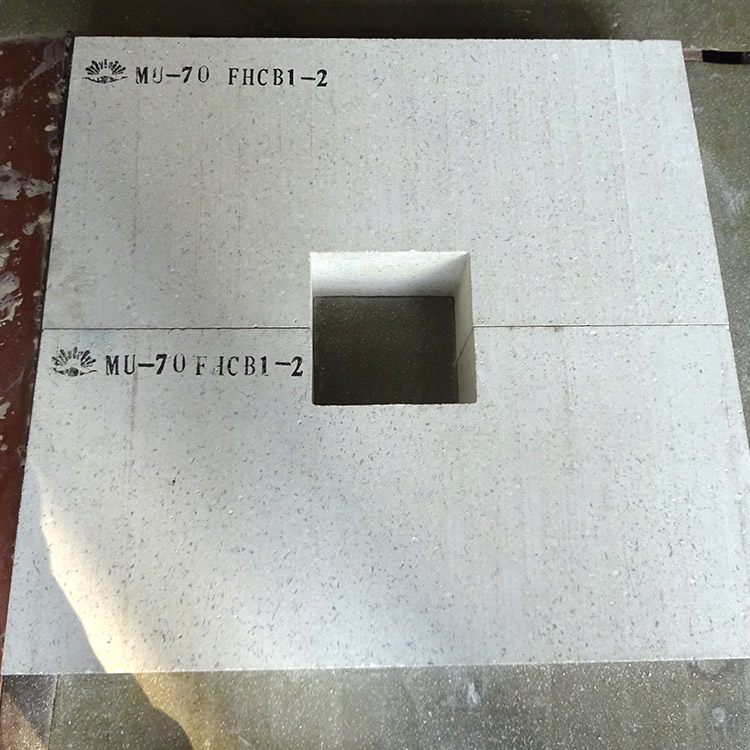.jpg?x-oss-process=image/resize,h_1000,m_lfit/format,webp)
In the high - tech and industrial sectors, high - performance zirconia bricks play a crucial role. For example, in the glass - melting industry, these bricks are used to line the furnaces, significantly enhancing the service life of the equipment and improving the quality of glass products. In the ceramic sintering process, they also ensure the stability of the firing environment. This article will take you on a journey to explore the secrets behind the outstanding performance of high - performance zirconia bricks.
High - performance zirconia bricks are mainly made from α - Al2O3, partially stabilized zirconia, and zirconia - corundum clinker. α - Al2O3 has high hardness and excellent chemical stability. With a hardness of about 9 on the Mohs scale, it provides high wear resistance to the zirconia bricks. Partially stabilized zirconia has unique phase - transformation toughening properties. When the brick is under stress, the phase transformation of zirconia can absorb energy, thereby improving the toughness of the brick. Zirconia - corundum clinker combines the advantages of both zirconia and corundum, enhancing the refractoriness and thermal shock resistance of the bricks. It can withstand temperatures up to 1800°C, ensuring the bricks can operate stably in high - temperature environments.
.jpg)
The mixing process is the first step in ensuring the uniformity of the raw materials. During this process, the raw materials are fully mixed according to a certain ratio. The mixer's rotating speed and mixing time are strictly controlled. Generally, a mixing time of about 30 - 60 minutes can ensure that the raw materials are evenly distributed, which is crucial for the overall performance of the bricks.
After mixing, the raw materials are sent to the molding process. High - pressure molding technology is usually used to ensure the density and shape accuracy of the bricks. The molding pressure is generally around 100 - 200 MPa. A higher pressure can make the internal structure of the bricks more compact, thereby improving the strength and wear resistance of the bricks.
The dried bricks can reduce the moisture content to less than 1%. This step is to remove the moisture in the bricks to prevent cracking during the firing process. The drying temperature and time are also precisely controlled. Usually, the drying temperature is between 100 - 200°C, and the drying time is about 24 - 48 hours.
The final firing in the shuttle kiln is a key step to determine the performance of the bricks. The firing temperature can reach 1600 - 1800°C. At such high temperatures, the raw materials undergo a series of physical and chemical reactions, forming a stable crystal structure. This process significantly improves the refractoriness, mechanical strength, and chemical stability of the bricks.

The excellent raw materials and strict manufacturing processes jointly endow high - performance zirconia bricks with outstanding performance. The high - hardness α - Al2O3 and the toughening effect of partially stabilized zirconia, combined with the high - temperature firing process, make the bricks have high wear resistance, toughness, and refractoriness. The uniform mixing and high - pressure molding ensure the density and uniformity of the bricks, which is conducive to improving the overall performance of the bricks.
In a large - scale glass - melting plant, after using our high - performance zirconia bricks, the service life of the furnace has been extended from the original 2 - 3 years to 5 - 6 years, greatly reducing the frequency of furnace repairs and replacement costs. In a ceramic factory, the use of these bricks has improved the product qualification rate by about 15% due to the stable firing environment provided by the bricks.
.jpg)
High - performance zirconia bricks are the result of elaborate design and strict manufacturing processes. If you want to learn more about these excellent products or have any questions, please feel free to contact us. We are committed to providing you with the best refractory solutions and look forward to your inquiry!


